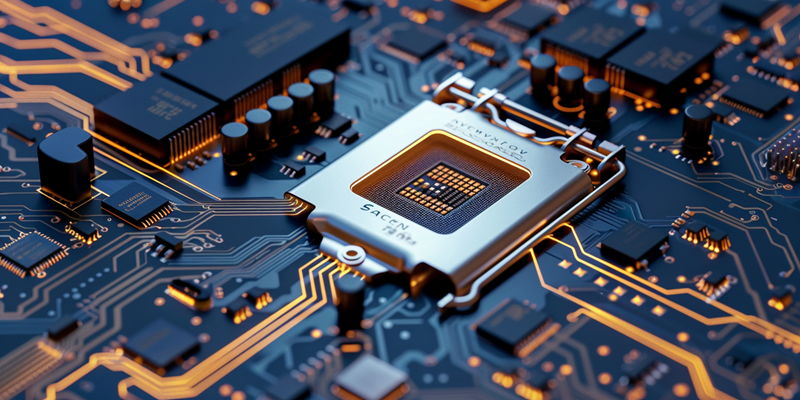Intel’s latest foray into the high-end CPU market has been met not with praise, but with concern, as reports of their 13th- and 14th-gen i9 processors experiencing crashes and booting issues, particularly under gaming loads, have surfaced. As customers and tech enthusiasts alike seek answers, Intel’s official response directs attention toward motherboard manufacturers, suggesting the crux of the problem lies in improper thermal management.
Intel’s Overheating Controversy Unpacked
Intel’s Official Stance on CPU Failures
After a multitude of complaints from consumers, Intel released a statement highlighting power and thermal management problems in their high-end processors. The company acknowledged the crashes and booting issues, which appear to be happening during high-performance tasks such as gaming, causing frustration among its user base. This admission set the stage for a broader inquiry into the symbiotic relationship between the CPUs and the motherboards designed to support them. Intel’s insistence on motherboard shortcomings has reframed the narrative, prompting a discussion about the mutual responsibilities of component manufacturers in a user’s system stability.
Thermal and Power Management Missteps
At the center of the debate is the balance between performance and system stability. Intel points to inadequate implementation of thermal and power features by motherboard vendors as a contributing factor to the problem. The discussion here delves into the technical aspects of CPU and motherboard compatibility and Intel’s power delivery design decisions. This scrutinizes how motherboard manufacturers integrate Intel’s CPUs into their designs and address the intense power and thermal demands required for optimal performance. It also raises questions about whether Intel’s high-performance CPUs are pushing the limits of current motherboard technologies too far.
Striving for Stability in High-Performance CPUs
BIOS Updates and Their Outcomes
Manufacturers like Asus and Gigabyte have rolled out BIOS updates, attempting to address the instability. These fixes, however, had varying success, with some causing a dip in CPU performance, leading to further frustration among those who expect maximum efficiency from their hardware investments. For enthusiasts and gamers who tailor their systems for peak output, such concessions are unacceptable. This controversy has not only highlighted the intricate power dynamics between CPUs and motherboards but also emphasized the importance of a seamless integration of hardware and firmware for stable, high-powered computing.
Intel’s Recommendations to Users
Faced with the complexity of the issue, Intel advises consumers to err on the side of caution. The company recommends adhering to default BIOS settings and avoiding overclocking practices. This perspective reflects the delicate interplay between pushing hardware to its limits and ensuring its reliability during normal use. By urging users to forego aggressive performance tweaks, Intel’s guidance may sideline a portion of its core market—those who relish in customizing and pushing their systems—but it also underscores the pragmatic necessity of prioritizing stability over speed.
The Technicalities Behind the Performance
The Dilemma of Maximizing CPU Capabilities
Intel’s processors, particularly the i9-13900K, are known for their substantial power consumption, which can peak under intense workloads. This section discusses Intel’s ‘Extreme Power Delivery’ profile and how it fits into the narrative of the chip’s power-thirsty nature and subsequent thermal challenges. The profile’s purpose is twofold: enable potential headroom for performance boosts and challenge the existing thermal paradigms of motherboards. However, this approach begs the question: are such capabilities truly accessible if they induce system instability?
Intel’s Role in the Ecosystem
Exploring Intel’s part in the broader PC component ecosystem provides insight into how the company’s actions, or lack thereof, influence the overall performance and stability of systems built with its CPUs. The relationship between CPU designs, motherboard manufacturers, and end-user practices is crucial for understanding the current predicament. While Intel designs its processors for peak performance, it is the motherboard manufacturers’ responsibility to ensure their products can handle such rigorous demands, an endeavor that increasingly seems like a joint effort.
The Road Ahead for Intel and Its Consumers
Waiting for Intel’s Next Move
Intel has committed to ongoing investigations and promised further information by May. The anticipation for this update is palpable within the tech community, which is eager to see Intel’s plan for a comprehensive resolution to these pressing i9 processor issues. As Intel navigates this predicament, its actions will not only influence its reputation but also set precedents for how CPU thermal and power anomalies are addressed in future technologies.
Managing Expectations and Performance
Intel’s entrance into the high-powered CPU sector, specifically with their 13th- and 14th-gen i9 chips, has stirred up more concerns than commendations. These top-tier processors have been plagued by reports of crashes and booting difficulties, especially when under the stress of gaming conditions. The community of customers and tech-savvy individuals are in pursuit of clarity over these incidents. In response, Intel pointed the finger at motherboard producers, implying that the heart of these issues might be rooted in subpar thermal management from the motherboards. This suggests that the processors themselves might not be at fault, but rather the critical cooling solutions and motherboard configurations required for maintaining optimal operating temperatures are inadequate. This direction from Intel has sparked a broader conversation about the relationship between CPU performance and motherboard support, underlining the importance of collaboration between silicon and system design for peak performance.

